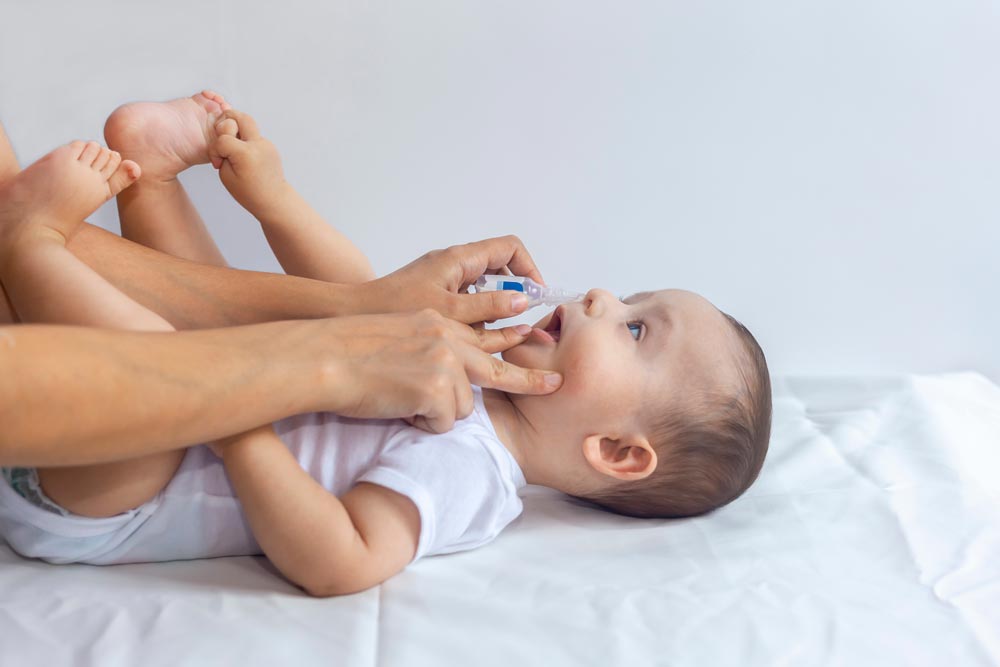Advertisment
Saline nasal drops reduce the duration of the common cold in young children by two days

Using hypertonic saline nasal drops can reduce the length of the common cold in children by two days, according to a study that will be presented at the European Respiratory Society (ERS) Congress in Vienna, Austria [1]. They can also reduce the onward transmission of colds to family members.
The results of the ELVIS-Kids randomised controlled trial were presented by Professor Steve Cunningham from Child Life and Health, University of Edinburgh, UK.
He said: “Children have up to 10 to 12 upper respiratory tract infections, what we refer to as colds, per year, which have a big impact on them and their families. There are medicines to improve symptoms, such as paracetamol and ibuprofen, but no treatments that can make a cold get better quicker.”
ELVIS-Kids Chief Investigator Dr Sandeep Ramalingam, consultant virologist, NHS Lothian, Edinburgh, UK, had noted that salt-water solutions are often used by people in South Asia, as nasal irrigation and gargling, to treat a cold and wanted to explore if this clinical benefit could be replicated in a large study.
The research team recruited 407 children aged up to six years to a study where they were given either hypertonic saline ~2.6% (salt-water) nasal drops or usual care when they developed a cold. Overall, 301 children developed a cold; for 150 of these, their parents were given sea salt and taught to make and apply salt-water nose drops to the children’s noses (three drops per nostril, a minimum of four times per day, until well) and 151 children had usual cold care.
Professor Cunningham explains: “We found that children using salt-water nose drops had cold symptoms for an average of six days where those with usual care had symptoms for eight days. The children receiving salt water nose drops also needed fewer medicines during their illness.
“Salt is made up of sodium and chloride. Chloride is used by the cells lining the nose and windpipes to produce hypochlorous acid within cells, which they use to defend against virus infection. By giving extra chloride to the lining cells this helps the cells produce more hypochlorous acid, which helps suppress viral replication, reducing the length of the virus infection, and therefore the duration of symptoms.”
When children got salt-water nose drops, fewer households reported family members catching a cold (46% vs 61% for usual care). Eighty-two per cent of parents said the nose drops helped the child get better quickly and 81% said they would use nose drops in the future.
Professor Cunningham added: “Reducing the duration of colds in children means that fewer people in their house also get a cold, with clear implications for how quickly a household feels better and can return to their usual activities like school and work etc.
“Our study also showed that parents can safely make and administer nose drops to their children and therefore have some control over the common cold affecting their children.”
Professor Alexander Möeller is Head of the ERS Paediatric Assembly and Head of the Department for Respiratory Medicine at the University Children’s Hospital Zurich, Switzerland, and was not involved in the research. He said: “This is an important study that is the first of its kind to investigate the impact of salty nose drops in children with colds. Although most colds usually don’t turn into anything serious, we all know how miserable they can be, especially for young children and their families.
“This extremely cheap and simple intervention has the potential to be applied globally; providing parents with a safe and effective way to limit the impact of colds in their children and family would represent a significant reduction in health and economic burden of this most common condition.”
The team hope to further investigate the effect of saltwater nose drops on wheeze during colds, after initial results from this study showed that children who received the drops had significantly fewer episodes of wheeze (5% vs 19%).





